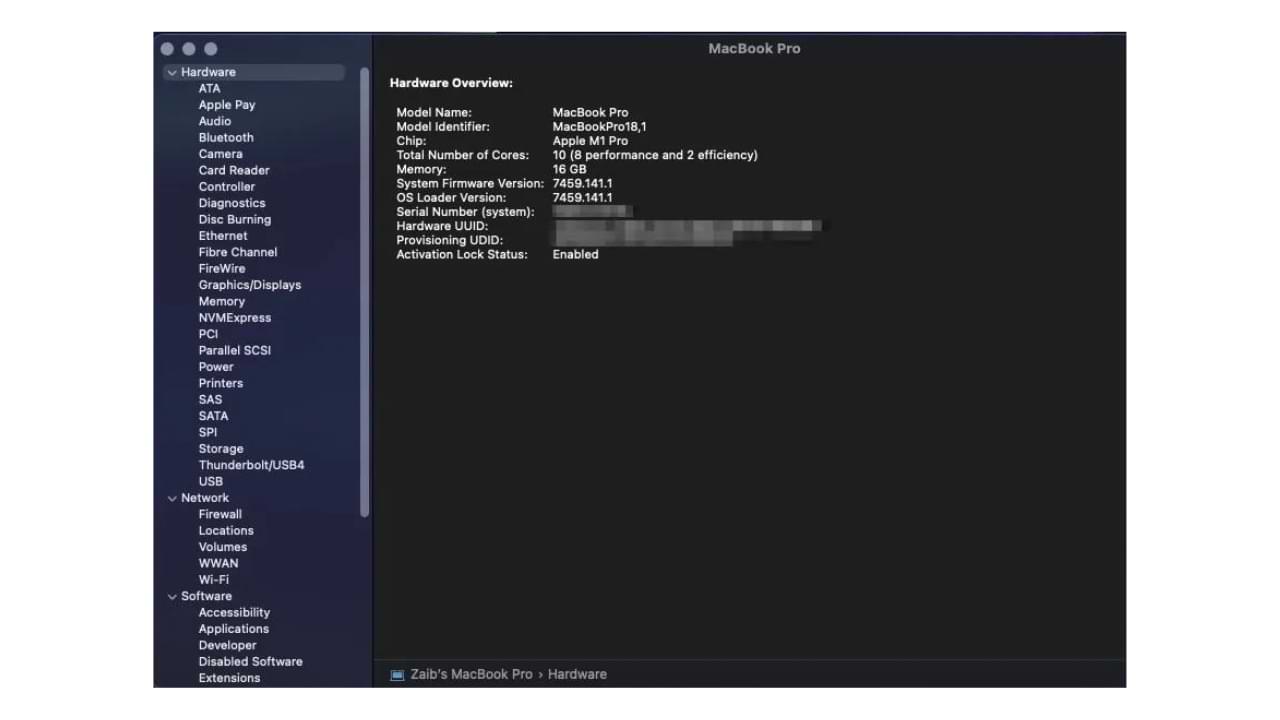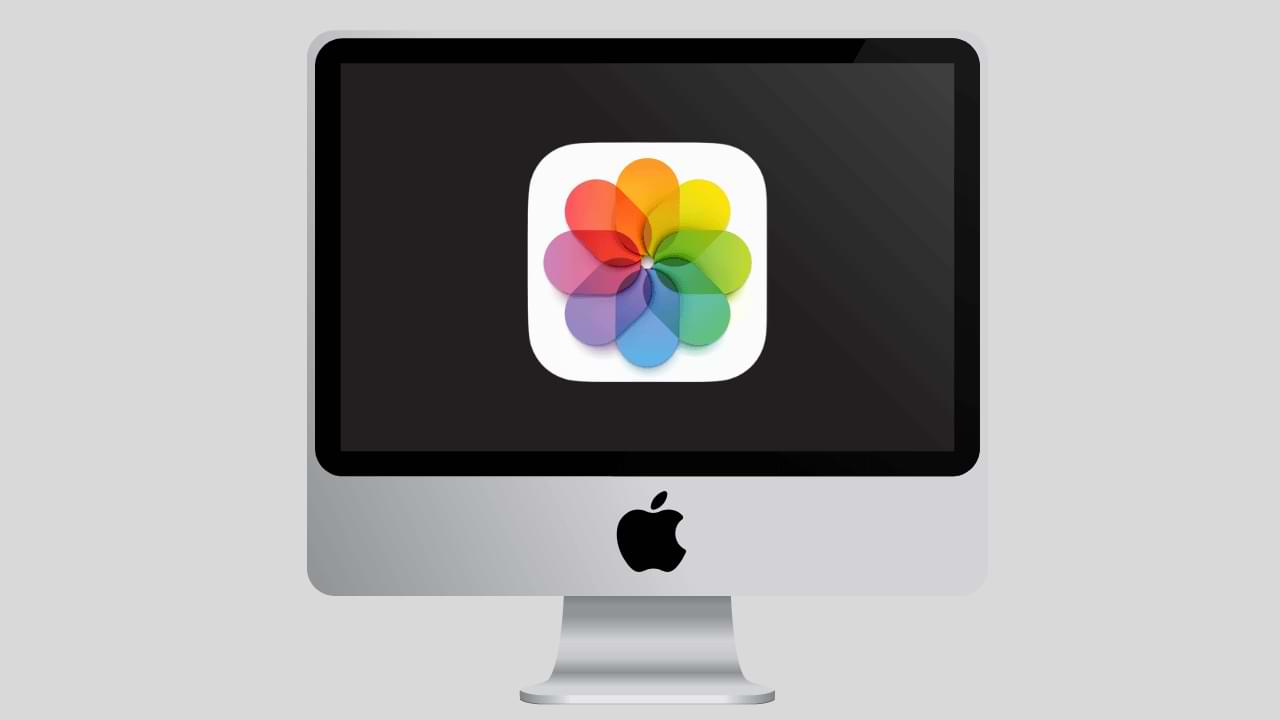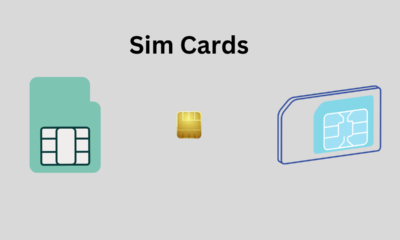Mac
How to Group or Ungroup Files in Stack on My Mac Desktop – Quick and Easy

How to Group or Ungroup Files in Stack on My Mac Desktop
Mac is one of the most sophisticated systems and desired by millions of people, its unique system allows its users to enjoy privileges and benefits that they can only obtain if they use said system. If you are a new Mac user and want to learn how to use the system correctly or log in automatically, today is your lucky day.
We have prepared an article where we will show you the ways to organize your files on the Mac desktop, in addition, we will show you useful tips and shortcuts that will help you keep all your files organized and within reach.
Organize your files on the Mac desktop
You have surely noticed that the desktop occupies a large part of your screen and is the shortcut in which almost all the work is done. It is normal for you to save your files there. You can save file folders, documents, and even aliases to your desktop. To better organize these files we will show you step by step the best way to do it.

The desktop that Mac provides allows you to organize your files in different ways. You can classify your files by names, date they were added, types, labels, and sizes. In order to do this, you must follow two simple steps:
- Click on the desktop and select the “View” option.
- Then go to the ” Sort by ” option and choose how to sort your files on your Mac desktop.
Another method that you can apply perfectly to make the desktop of your Mac computer look more orderly and elegant is to hide the icons and some folders on your desktop.
How to group items on the desktop
To quickly group items on the Mac desktop, the first thing you should do is select all the items you want to group, then press ” Control + click ” on one of the items and select the option ” New folder with selection .” Unfortunately, you will not be able to group the locked items.
Use stacks to organize your files
Stacks are a great option to keep your files organized on your desktop. It allows you to section your files. Mac, allows you to group your stacks to have a better order. To do so, you just have to drag the files and drop them in the created folders. Even if you split your stacks by names, every time you save a related file it will be saved directly to the stack with that name.
How to resize and space icons on your Mac desktop
If you have a lot of files on your desktop and you don’t want to group folders, one way to get more space is by resizing the icons for your files on your desktop. Still don’t know how to do it? Don’t worry, following these steps you can do it quickly:
- The first thing you should do is click on the desktop and select the ” View ” option.
- Then select ” Show Display Options ” and use the controls that will appear to change the size of the icons on the desktop.

An easier way to change the icons on your Mac desktop or directly press « Control + click » on the desktop and select ” Show display options “.
Organize your stacks in the Dock
Stacks in the Dock are an excellent shortcut when selecting your search engines and applications in even your favorite files if you want to learn how to organize the Dock or insert a stack into them. To carry out this configuration you just have to follow two steps:
- Select the file, folder, or app that you want to put in the Dock.
- Drag it to the desired location in the Dock and release.
Your stack of files will automatically be inserted so that you can access them more easily from the Dock. If you want to change the look of the folder or file, press Control + the file you want and sorting options will appear.
Then select the desired one and choose if it will be visible in the Dock (you can also modify the appearance of a file without it appearing in the Dock ). We hope you found this content useful and you already know how to better organize and customize your Mac.

Mac
How to Access System Report on MacOS Ventura

Accessing the System Report on a MacOS Ventura can provide you with useful information about your device, including its hardware and software specifications, performance, and usage statistics. This information can be especially useful if you are troubleshooting an issue, trying to upgrade your device, or just want to know more about your computer.
Here’s a step-by-step guide on how to access the System Report on a MacOS Ventura:
Step 1: Open the Apple Menu
The first step to accessing the System Report is to open the Apple menu located in the top-left corner of your screen. Click on the Apple logo to open the menu.
Step 2: Choose “About This Mac”
Once the Apple menu is open, select “About This Mac” from the options. This will open a window that displays basic information about your MacOS Ventura, such as the operating system version, processor type, and memory.
Step 3: Click on “System Report”
At the bottom of the “About This Mac” window, there is a button labeled “System Report”. Click on this button to open the System Report.
Step 4: Browse the System Report
The System Report contains a wealth of information about your MacOS Ventura. You can browse through the report by clicking on the various categories listed on the left side of the window. Some of the categories you may want to check out include:
- Hardware: This section provides detailed information about the hardware components of your device, including the processor, memory, storage, and other peripherals.
- Software: This section provides information about the software installed on your MacOS Ventura, including the operating system version, installed applications, and other software.
- Network: This section provides information about your device’s network connections, including Wi-Fi, Ethernet, and other network devices.
- Power: This section provides information about your device’s power usage and battery performance.
Step 5: Save the System Report
If you need to save the System Report for later reference, you can do so by clicking on “File” in the menu bar and selecting “Save”. This will allow you to save a copy of the report as a text file on your computer.
In conclusion, accessing the System Report on a MacOS Ventura can provide you with valuable information about your device, and can be a helpful tool for troubleshooting, upgrading, or just getting to know your computer better. By following these steps, you can easily access and save the System Report on your MacOS Ventura.
Mac
How to Copy & Paste Edits to Photos on Mac

Copying and pasting edits to photos on a Mac can be a time-saving technique for those who often need to apply similar adjustments to multiple photos. Here is a step-by-step guide to copy and paste edits from one photo to another on a Mac:
- Open Photos app: The Photos app is the default photo management software for Mac computers. Open it by clicking the Photos icon in the Launchpad or by searching for it using Spotlight.
- Select the Source Photo: Choose the photo that you have already made edits to and want to copy the adjustments from.
- Click “Edit” button: Once the source photo is selected, click the “Edit” button located in the top right corner of the Photos window.
- Copy Edits: To copy the edits, click the “File” menu and then select “Duplicate” or press “Cmd+D”. A duplicate copy of the photo will appear in the Photos library.
- Select the Destination Photo: Next, select the photo to which you want to paste the edits.
- Click “Edit” button: As in step 3, click the “Edit” button to open the editing tools for the destination photo.
- Paste Edits: Now, click the “File” menu and select “Paste Adjustments” or press “Cmd+Option+V”. The adjustments from the source photo will now be applied to the destination photo.
- Save Changes: After pasting the edits, make sure to save the changes to the destination photo by clicking the “Done” button in the top right corner of the Photos window.
Note: The “Paste Adjustments” feature is only available on Photos app version 3.0 or later. If you have an older version, you may need to update the Photos app to take advantage of this feature.
By following these simple steps, you can easily copy and paste edits from one photo to another on your Mac. This can save time and effort, especially when making similar adjustments to multiple photos.
Mac
How to Change the Undo Send Delay on Mac Mail

Mac Mail is a powerful email client that comes built-in with the latest version of macOS. It offers a wide range of features that make email management a breeze. One of its most useful features is the “Undo Send” option, which allows you to recall a sent email within a few seconds of sending it.
By default, the undo send delay on Mac Mail is set to 10 seconds, but this setting can be changed based on your preference. In this article, we will be discussing the steps involved in changing the undo send delay on Mac Mail.
Step 1: Launch Mac Mail
To begin, launch the Mac Mail application on your Mac.
Step 2: Go to Preferences
Next, click on the Mail menu in the top left corner of the screen and select “Preferences“. This will open the Mail preferences window.
Step 3: Select “Composing”
In the preferences window, click on the “Composing” tab. This tab contains all the settings related to composing and sending emails in Mac Mail.
Step 4: Change Undo Send Delay
Under the “Undo Send Delay” section, you will see the current delay setting. You can change this setting by using the drop-down menu to select a different value. The values range from 10 seconds to 120 seconds.
Step 5: Save Changes
Once you have selected the desired delay setting, close the preferences window by clicking on the “OK” button. Your changes will be saved automatically.
Step 6: Test the New Delay
To test the new undo send delay, send an email and try to recall it within the new delay time. You should be able to recall the email by clicking on the “Undo Send” option in the top right corner of the screen.
In conclusion, changing the undo send delay on Mac Mail is a simple process that can be done within a few minutes. By increasing the delay, you can give yourself more time to recall a sent email in case you made a mistake. This can save you from potential embarrassment and improve your email management experience.
-

 Phones5 years ago
Phones5 years agoApple iPhone 11 (2019) – Release, Info, Leaks, Rumors
-
![Huawei's New Operating System is HarmonyOS [ Officially ],harmony os,huawei new operating system, huawei harmony OS,](https://www.thedigitnews.com/wp-content/uploads/2019/08/Screenshot__2285_-removebg-preview-2-1-400x240.png)
![Huawei's New Operating System is HarmonyOS [ Officially ],harmony os,huawei new operating system, huawei harmony OS,](https://www.thedigitnews.com/wp-content/uploads/2019/08/Screenshot__2285_-removebg-preview-2-1-80x80.png) Phones5 years ago
Phones5 years agoHuawei New Operating System is HarmonyOS [ Officially ]
-

 News5 years ago
News5 years agoBelle Delphine bath water – Instagram Model Sells Used Bathwater For 30$ To Their Loyal Followers
-

 Tech5 years ago
Tech5 years agoLevi’s Bluetooth Jacket Lets You Control Your Smartphone




















